Eating enough protein is important for everyone to maintain muscle and good health. When you’re resistance training and your goal is to build muscle or burn fat without losing lean mass, knowing how much protein you need and eating enough protein every day is even more important. The optimal intake for people who are lifting is more than what sedentary people need and a lot more than what most health organizations recommend.
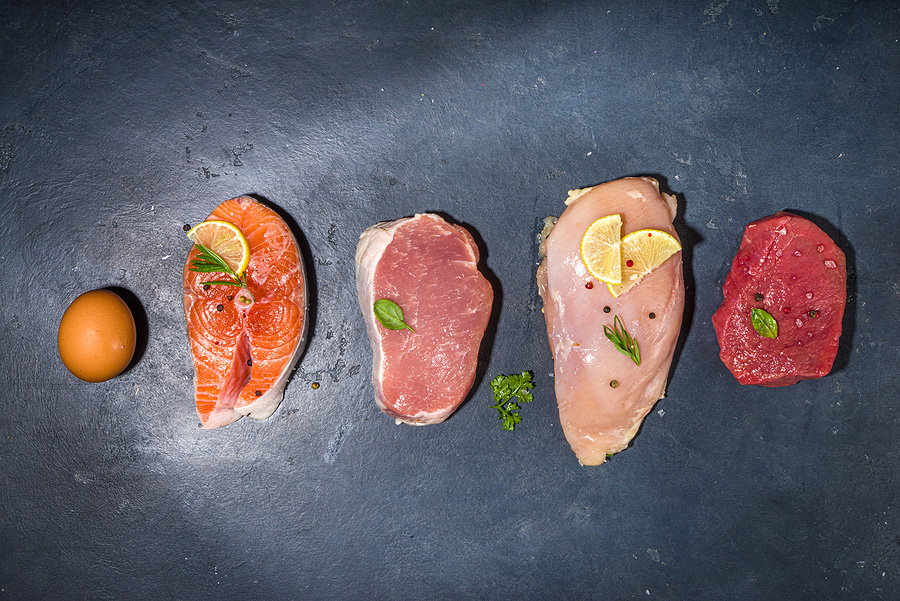
What about the recommended dietary allowance (RDA) of 0.8 g per kg of bodyweight (.36 g per pound) per day? That low number doesn’t apply to physique enthusiasts and strength athletes. It’s a minimum to prevent deficiency and health problems. When you’re lifting and working on improving body composition, optimal protein amounts start around twice that.
Most research suggests that the recommended minimum intake to support optimal resistance training adaptations is .73 grams per pound of bodyweight per day, possibly as high as .8 grams.
There’s no scientific evidence that higher protein intakes will build more muscle. However, there are potential benefits from consuming more protein for people who are strength training and dieting for fat loss.
Protein has a higher thermic effect, can suppress appetite and help preserve lean body mass when you’re in a calorie deficit, especially when you’re already lean. Lean protein is also harder to overeat and less likely to convert to fat in a calorie surplus than dietary fat. These are some of the reasons why it’s so common to see 1 gram per pound of bodyweight recommended in the fitness community. It’s also not unusual to see bodybuilders aiming for 1.2 grams or even up to 1.5 grams per pound of bodyweight to preserve muscle during contest prep or minimize fat gain during a bulk.
How much protein is enough depends on many factors, and prescribing the right amount can be nuanced and context-dependent. But all things considered, for people who are not overweight who are resistance training and dieting for fat loss or muscle gain, the optimal intake based on science usually falls in a range of .73 to 1.0 grams per pound per day. People doing intense training or dieting in a deficit usually lean to the higher end of that range.
What if you can’t seem to get enough protein?
Many people complain that they have a hard time hitting their daily protein goal. For years, I’ve received messages from readers worried about falling short. For example, on our Burn the Fat Feed the Muscle member forums, Laura posted:
“I keep track of my calories and macros with an app, and I’ve been finding it difficult to eat the recommended amount of protein, despite eating a portion four times a day. How does everyone get enough protein? Am I worrying too much about following the numbers the app gives me? My settings are for “bodybuilder” which is a 40-40-20 protein, carb, fat split. On hard exercise days, the app says I need 170 to 200 grams. Another problem is, how can I get enough protein while keeping the fat around 20% of calories? I’ve been reducing peanut butter, nuts, oil, sauces and dressings, but it seems like when I increase protein, the fat goes up too and throws off the calories and macros.”
For years, I’ve answered so many questions like this one, I knew it would be most helpful if I finally wrote a blog post listing the best ways to eat more protein.
In the list below, I’ll briefly mention how to get more protein from plant-based foods, but to cover the subject of “how does a vegetarian get enough protein” in detail will take a separate blog post.
Before I share my list of the best practical and proven ways to get more protein, there’s one important point to consider:
A common reason people feel it’s hard to eat enough protein is because they set their daily goal too high.
Many people who are into serious fitness and weight training have heard that 1 gram per pound of body weight is how much protein you’re supposed to eat each day. In the context of bodybuilding and physique sports, 1 gram per pound is a good target. However, it is on the high side and includes a margin for error.
When it comes to how much protein, it’s better to err a little high than too low, but recreational lifters and dieters trying to emulate the protein intake of pro bodybuilders might want to rethink that goal and simply make sure to hit the low end of the range. This could relieve worries and solve the perceived protein “shortage” problem instantly.
Remember that 1 gram per pound of bodyweight per day is the high end of a recommended range that starts at .73 grams per pound of bodyweight. Some coaches in the strength and physique space today recommend between 0.8 and 1.2 grams. Many diet coaches recommend 0.8 to 1.0 grams per day per pound of body weight with assurance that anywhere in this range will cover almost everyone’s needs
The important thing to note is that there is not a single number you must hit. How much protein you should eat is prescribed in a range, and you get to make a judgement call of where to set the protein within that range. Generally, the more intensely you train, the lower your body fat and the more aggressive your calorie deficit, the more you should lean to the high end of the range.
For a 175-pound man, .8 grams would be only 140 grams per day and .9 would be 157 grams per day. The low end of .73 grams is only 127 grams of protein per day.
If an app on the “bodybuilder setting” tells you to eat 175 or even 200 grams a day, that can be intimidating. But 130 or 140 grams is not difficult to hit (that’s four meals with 35 grams of protein per meal). It’s an option, not a necessity, for the 175-pound person to eat 175 grams of protein. Most often, it’s bodybuilders and physique enthusiasts who aim for the upper range or higher.
Here’s another way people overestimate their protein needs. Protein targets are often set by pounds of total body weight. But if someone weighs 300 pounds and a large percentage of that is body fat, is it necessary to eat 300 grams? No way, and good luck trying. The body doesn’t need extra protein to support adipose tissue.
This is why so many diet coaches recommend 1 gram per pound of GOAL body weight to people with high body fat, not 1 gram per pound of TOTAL body weight. Sometimes the target is based on lean body mass, if known. There are even new formulas based on height. There is little research and no consensus on minimum protein needs for the overweight or obese, but one 2016 study suggested .54g to .68g per pound of total body weight.
Setting macros by percentage can also lead to overestimation errors if you’re not careful. Recall the case of our member Laura. She followed a 40-40-20 macro ratio based on a nutrition app suggestion, and many other people set their macros this way. It’s not uncommon to hear of people setting protein as high as 50% of total calories (which is incredibly high) because they heard that some bodybuilders do that on low calorie contest diets. This doesn’t apply to most people.
Protein targets should be set carefully based on your own goals, body composition and training status. When setting protein at 40% or higher of total calories, many people will accidentally set their daily target too high, which sets them up to feel like they’re failing. Using percentages to set all three macros can work, but people who aren’t experienced athletes or coaches often don’t know how to choose the correct ratios for their situation.
When you’ve set calories correctly and you’re in a moderate calorie deficit, 35% of total calories is usually more than sufficient. But the newer preferred way for setting macros is the protein-first method, which is based on grams of protein per pound of bodyweight, not percentages alone.
Learn more about the new protein first method here
Members can check out our new online protein first calculator here
The 33 best ways to eat enough protein for building muscle and burning fat
Now that we’ve established how much protein to aim for each day, here’s our complete list of ways to help you more easily hit your daily protein goal.
1. Eat a full serving of quality protein with every meal
If you want to get enough protein for the day, then you should set a goal to eat a protein at every meal, and turn it into a habit so you do it automatically without even having to think about it. This is what I call a master habit because it has the potential to make a massive impact on your results.
Protein foods include lean beef, game meats, chicken breast, turkey breast, lean pork, fish, shellfish, eggs, low or nonfat dairy products (milk, cheese, cottage cheese and yogurt) and protein powders (whey, casein, milk or egg).
Vegetarians and vegans should follow the protein at every meal guideline as well, they’ll simply be using higher-protein plant-based foods (or supplements). Vegetarian sources include low-fat or non-fat Greek yogurt, low-fat or non-fat yogurt, low-fat or non-fat cottage cheese, low-fat or non-fat cheese, low or nonfat milk, eggs, and whey or casein protein powders.
Some of the higher protein vegan foods include lentils, beans, chickpeas, black-eyed peas, green peas, buckwheat groats, oatmeal, multigrain cereals, amaranth, edamame, soy milk, high protein pastas (chickpea, red lentil, etc), meat substitutes including tofu, tempeh, textured vegetable protein and seitan, as well as vegan protein powder supplements such as pea, hemp, soy, and rice.
2. Start with protein and always build a meal around the protein
Not only should you include a protein with every meal, you should make it the top priority. When you’re creating a meal, always ask yourself first, “where is the protein?” Make sure the protein is on your plate as the first priority, with vegetables (or fruit) second and then last in priority the natural starchy carbs and whole grains with the calories you have remaining.
3. Eat more meals that contain protein (reconsider your meal frequency)
Eating more often than breakfast, lunch and dinner can make it much easier to hit protein goals because that’s more opportunities to include protein. Many bodybuilders eat 5 or 6 times a day, but if you simply eat one more time daily (another meal, a high-protein snack or smoothie), this one strategy alone is enough to instantly bump you from falling short to easily hitting your goal.
4. Plan your meals in advance
If you’re struggling to get enough protein, there’s no substitute for taking the proactive approach and creating a personalized daily meal plan. You can do this easily with mobile apps, online software or even a spreadsheet. Choose your foods in advance and check the macro grams to be sure you’re getting enough protein. Then you simply follow your plan and measure your portions. This removes all the guesswork and increases focus and adherence.
Learn more about meal planning for fat loss here
5. Use supplements if you’re falling short from whole food sources
Protein supplements are never mandatory and are no better than whole foods nutritionally. But they do help a lot of people boost their daily protein if they’ve been falling short from whole food sources. There are many different types of powders, and you can use them to whip up a tasty drink or smoothie and there are countless ways to add protein powders into food (think of it as a recipe ingredient).
6. Eat eggs, but use whole eggs in moderation if you want to control fat and calories
Eggs are a superb protein source but if you have a small calorie budget it’s best to minimize the yolks for calorie control. For example, use one whole egg (it does contain valuable nutrients) and use the rest egg whites.
Egg whites versus whole eggs: How they fit into bodybuilding and fat loss diets
7. Boost protein and keep fat and calories in check by using liquid egg whites
Egg whites are a great source of the leanest protein you can get, and you can’t beat the convenience of pouring them from a carton. One cup has 27 grams of protein. Bonus tip: You can use pasteurized liquid egg whites in overnight oats instead of milk, giving the protein a big bump
Check out my mocha cappuccino overnight oats recipe
8. Add low-fat or non-fat cheese to your eggs
A traditional omelet recipe calls for only two or three eggs. Many people check that off as successfully getting enough protein. But two large eggs only have 12 grams of protein. Three eggs are still only 18 grams. Adding low-fat or non-fat cheese is an awesome way to bump the protein and get 30 grams or more in a single meal. The best part is, cheesey eggs taste awesome.
9. Add lean meats to your eggs
Steak and eggs is a classic. But you can add any kind of lean meat to an omelet or scramble, including chicken or ground turkey. That makes it a cinch to get 40 grams or more while keeping the calories and saturated fat down. If you include lean meat and reduced fat cheese, your breakfast could top 50 grams while staying low in fat and low in calories.
99% fat-free ground turkey and egg white scramble with tomato and cilantro (members)
10. Increase the portion size of meats and fish
A typical portion of meat or fish is often listed as 3 to 4 ounces. Some say a proper portion is the size of the back of your hand or deck of cards. The truth is, there’s no proper portion size that applies to everyone. This may seem obvious, but if you’re falling short on protein, simply eat bigger servings. For many people, it takes at least a 5 or 6 ounce serving of lean meat or fish to get protein in the right ballpark.
11. Use the leanest beef possible for calorie control and good health
Many cuts of beef are high in fat but others like top round are extremely lean. Once or twice a month as a treat, I marinate and broil up a New York strip, and few times a year go to a steakhouse and splurge, not even trying to calculate the calories. But as a staple weekly protein source, I use top round beef or similarly lean cuts, because the beef with the lowest fat also has the highest protein.
12. Eat the leanest ground beef
Ground beef labelled as 90% fat free sounds lean, and 93% fat free sounds even better. But when you look closely at how much fat that is based on calories, not weight, you realize it’s not that lean at all. The leanest beef I can find is 96% fat free and that’s the only kind I use. It’s not only because it’s healthier, but also lower fat means higher protein.
One pot creole dirty rice with 96% lean ground beef
13. Eat 99% lean ground turkey and ground chicken
Ground turkey is available up to 99% fat free. So is ground chicken. I use them often in my recipes because it’s almost pure protein. Some people say they don’t like 99% lean ground poultry because it’s dry. That’s easy to overcome by adding moisture from onions, mushrooms, zucchini or other vegetables, as well as tasty sauces.
99% fat-free TNT turkey burgers (members)
14. Make meatballs with extra lean ground meat
There are dozens of ways to make and flavor meatballs and you can make them with lean ground beef, turkey or chicken. Like chicken breast, meatballs are like a blank canvas and they’re easy to make. They’re also great to make in bulk and refrigerate or freeze so you have them ready when you need them.
15. Eat the leanest skinless chicken breasts
Chicken breast is popular in bodybuilding and fitness diets for a reason – it’s very lean and high in protein. A 6-ounce boneless, skinless chicken breast gives you about 38 grams.
16. Roast a turkey breast
I often roast whole turkey breasts for meal prep and have it all sliced up and stocked in the fridge and freezer. It takes less than two hours in the oven at 375 to roast a 5 or 6 pounder and you’ll be getting the leanest of the meat. You don’t have to cook a whole bird.
17. Meal prep large batches of lean meats
It’s ideal to batch cook entire meals, but if protein is your biggest challenge, prepping large batches of protein foods once or twice a week and having them in the fridge or freezer can be a lifesaver. You can then simply drop your pre-made portions into salads, omelets, pasta and rice meals. It doesn’t take any longer to cook 4 chicken breasts than it does to do 1 of them.
18. Don’t forget lean pork for protein
Pork is an overlooked protein because most people think it’s high in fat. Some cuts are fatty, but not tenderloin. Pork is a nice change up when you’re bored with chicken, and it’s also budget-friendly compared to other meats. Compare the macros as well. A 4-ounce boneless, skinless chicken breast has 130 calories and 25.4 grams protein and 3 grams of fat. Pork tenderloin has 136 calories, 23.6 grams of protein and 3.9 grams of fat.
Burn the Fat, Feed the Muscle healthy sweet and sour pork tenderloin stir fry
19. Eat more fish
Eating lean fish is a great way to get more protein. Fish that are higher in fat have slightly less protein, but fatty fish like salmon, herring, sardines and rainbow trout contain the healthiest kind – omega 3 – so you should eat them often as well. Be aware that fish high on the food chain (shark, king mackerel, tilefish and swordfish) are more likely to be contaminated with mercury. It’s also worth looking for country of origin and comparing to seafood watchlists to make sure fish is sustainable and clean. For example, Tilapia raised in China have been red flagged for questionable farming practices.
20. Keep cans or packets of tuna or salmon stocked in your cupboards for salads and sandwiches
Tuna is a terrific protein source and keeping your cupboards stocked with cans or packets of tuna can help you hit your macro targets. And don’t forget salmon. All types of tuna may not be safe to eat without limit, however. The kind often sold as fresh tuna, tuna steaks or sushi, have been found with mercury levels above the advised cutoff of 1 part per million. The smaller tuna species (sold as canned “chunk light” tuna), have much lower levels of mercury (averaging 0.17 ppm).
21. Eat shellfish and other seafood
Shrimp can be pricey, but shrimp and all other lean seafood such as crab, scallops, clams, mussels, the occasional lobster are all good protein sources. Shrimp, crab, clams, and scallops also appear on the list of low mercury seafood.
New: Burn the Fat, Feed The Muscle ginger garlic sesame shrimp (members area)
22. Use low-fat or non-fat cheese as a protein source
Cheese can be a good protein source when you choose low-fat or non-fat types. A typical serving of cheese doesn’t provide as much protein as chicken breast, but you can add it in addition to other proteins to spike the total amount even higher. Non-fat cheeses are obviously not as rich, but are even higher in protein. A half a cup of low-fat shredded mozzarella gives you 153 calories and 9 grams of fat but still gives you 16 grams of protein. A half a cup of non-fat mozzarella has 18 grams of protein with only 90 calories.
Cheesy high protein Italian pasta bake (more protein than carbs!)
23. Make protein pancakes
Traditional pancakes are almost all carbohydrate. The protein in most pancakes is low except for the eggs and the trace amount in the flour. But pancakes are one of the easiest recipes to alter and fortify with protein. Protein powders can be used like flour and there are endless possibilities for protein pancakes with different types of flavors and textures.
Try our most popular protein pancake of all time
24. Make homemade protein desserts and protein bars
What could be better than bosting your protein while enjoying dessert? Flavored protein powders make a great recipe ingredient, and you can use it in baking. Cookies, bread, muffins, even brownies can be made with protein powder. The possibilities for homemade protein bars and other desserts are endless.
EAT! Burn the Fat, Feed the Muscle protein brownies! (Our most popular dessert!)
Home made no-bake vanilla almond protein bars
25. Eat yogurt, especially Greek yogurt which is higher in protein.
Non-fat Greek yogurt is one of the best and most versatile sources of protein you can eat. It’s great as a snack that doesn’t require prep time or cooking and can be incorporated into a variety of recipes. If you’re not using Greek yogurt to boost your protein you’re missing out.
26. Add protein powder to Greek yogurt
Stir whey into plain, non-fat Greek yogurt and you instantly have protein pudding in any flavor you desire. Add fruit to make it even more nutritious. Depending on your serving size, you could get 40 or even 50 grams of protein this way with no cooking required. (Try peanut butter and chocolate whey protein in Greek yogurt for a real treat).
27. Eat protein oats, aka “proats”
Simply stir in a scoop or two of whey into your oatmeal after it is cooked and that could bring the meal to 30, 40, even 50 grams of protein. Vanilla protein is delicious. So is chocolate! Plus, proats take only a few minutes to make. You can even eat them cold soaked if you don’t have access to a kitchen. That’s one way I keep my protein up when I’m out backpacking or if I want a cheap fast breakfast in a hotel room. Don’t forget, when you’re at home, you can bake oatmeal with protein powder too
High protein apple cinnamon baked oatmeal
28. Add Greek yogurt to your oatmeal or hot cereal
Greek yogurt in oatmeal not only boosts protein, but also makes oatmeal creamier. After your hot oatmeal is finished cooking, simply add the yogurt and enjoy a tastier and higher protein breakfast. Add it to proats for mega-high protein, and don’t forget overnight oats which can easily hit 40 grams of protein when made with yogurt and protein powder.
29. Eat low-fat or Non-fat cottage cheese
Cottage cheese is high in protein and is a convenient snack food that requires no cooking or food prep. Like all dairy products however, be sure to choose the low-fat or non-fat variety to keep calories lower and protein higher.
30. Add an extra protein source if you’re having cereal or a carb-dominant breakfast
Studies have found that most people get most of their protein at dinner. Many who complain about falling short on protein are falling short at breakfast. That’s because so many breakfast foods like pancakes, bagels, muffins or boxed cereal are carb dominant. (Or people skip breakfast). The milk that many people use in cereal contains protein, but even non-fat milk only has 8 grams per cup. If you add second protein source like hard boiled eggs, Greek yogurt, or a protein drink, you’ll get enough to hit the optimal amount for building muscle.
31. Include higher protein whole grains
Some foods classified as carbs also contain protein, especially legumes and many grains. For example, Barilla protein plus pasta has 10 grams in 2 ounces (dry). It’s not enough by itself, but it helps. Some types of breads like Ezekiel bread, are also higher in protein. Some breads and even bagels are fortified with whey – look up P28 (no affiliation). Oatmeal has a modest amount of protein and other breakfast grains/ cereals like buckwheat have even more than oats.
32. Eat more higher protein legumes
Beans, lentils, black eye peas, chickpeas and legumes all fall in the carb macro category, but they also have protein. In a typical serving, it’s not as much as lean meat or fish, but it all adds up if you have some good recipes in your regular meal rotation. Chickpea and lentil pasta taste takes some getting used to but has even more protein than types made from grains.
33. Add lentils, beans and larger meat portions to soups and stews
Many stews and soups are simply stock and broth with vegetables. This will leave you short on protein. (Sorry, but bone broth / collagen is the lowest quality protein there is). When you’re making homemade soups and stews, always be sure to add one or more protein sources. Make it a chicken noodle soup instead of simply a noodle soup. Make it a beef stew instead of just a potatoes, celery and carrots stew. If someone is plant based, including beans or lentils give another little protein bump.
Got any more ideas for eating more protein? Share below!
I hope you found this helpful, and also practical. There’s not a single suggestion on this list that I haven’t used myself, so I can say with confidence, these are personally proven and practical ideas for getting enough protein.
If you have any other ideas for increasing protein that did not appear on this list, please share them in the comments below – I’d love to hear from you. And be sure to check back here on Burn the Fat Blog every week or so because there are lots of new high-protein recipes on the way.
Do you want even more personalized help with your diet? Whether it’s calculating your macros, your calories, or getting help with meal ideas, when you’re a Burn the Fat Inner Circle member you can chat with me personally on the forums and get all your nutrition (and training) questions answered.
Learn more on the Inner Circle Website here.
To learn more about macro-based meal planning, click here
Tom Venuto,
Author of Burn the Fat, Feed the Muscle – The Bible Of Fat Loss
Founder, Burn the Fat Inner Circle
Not an Inner Circle member yet? Join us! CLICK HERE

Tom Venuto is a natural bodybuilding and fat loss expert. He is also a recipe creator specializing in fat-burning, muscle-building cooking. Tom is a former competitive bodybuilder and today works as a full-time fitness coach, writer, blogger, and author. In his spare time, he is an avid outdoor enthusiast and backpacker. His book, Burn The Fat, Feed The Muscle is an international bestseller, first as an ebook and now as a hardcover and audiobook. The Body Fat Solution, Tom’s book about emotional eating and long-term weight maintenance, was an Oprah Magazine and Men’s Fitness Magazine pick. Tom is also the founder of Burn The Fat Inner Circle – a fitness support community with over 55,000 members worldwide since 2006. Click here to learn more about Burn the fat Inner Circle
Scientific references
Antonio J et al, The effects of consuming a high protein diet (4.4 g/kg/d) on body composition in resistance-trained individuals, 11-19, 2014.
Antonio, Jose et al, The effects of a high protein diet on indices of health and body composition – a crossover trial in resistance-trained men, Journal of the International Society of Sports Nutrition6, 13:3, 2016.
Geisler C et al, Inadequacy of Body Weight-Based Recommendations for Individual Protein Intake-Lessons from Body Composition Analysis, Nutrients, 9(1):23. 2016.
Helms E et al, A systematic review of dietary protein during caloric restriction in resistance trained lean athletes: a case for higher intakes, International Journal of Sports Nutrition And Exercise Metabolism. 2: 127-138, 2014.
Morton R et al, A systematic review, meta-analysis and meta-regression of the effect of protein supplementation on resistance training-induced gains in muscle mass and strength in healthy adults, Br J Sports Med, 52(6):376-384, 2014.
Phillips S et al, Dietary protein for athletes: from requirements to optimum adaptation, J Sports Sci, Suppl 1:S29-38, 2019
Weijs, P et al, Peter J, Exploration of the protein requirement during weight loss in obese adults, Clin Nutr, 35(2), 394-398, 2016.
Witard O, Dietary Protein for Training Adaptation and Body Composition Manipulation in Athletes, International Journal of Sport Nutrition and Exercise Metabolism, 29, 165-174, 2019.
Wu g, Dietary protein intake and human health, Food Funct, (3):1251-1265, 2016


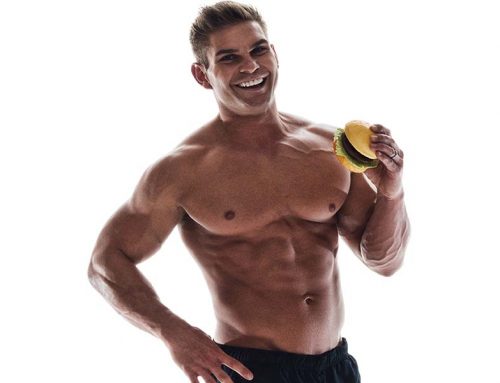

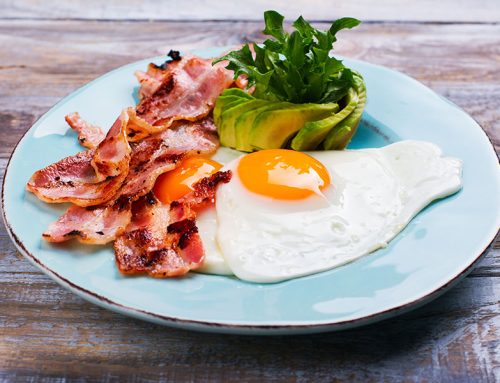
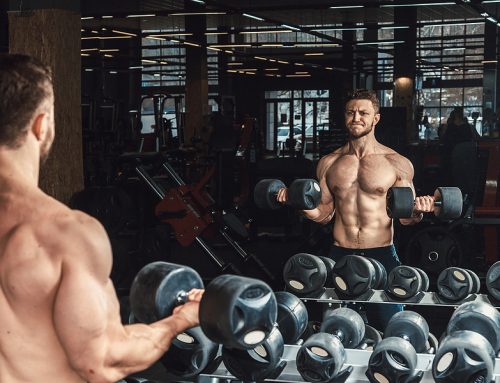
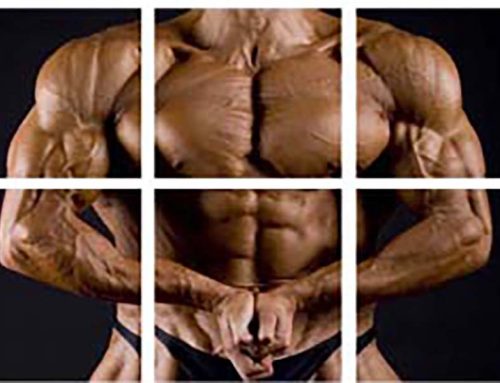
Leave A Comment